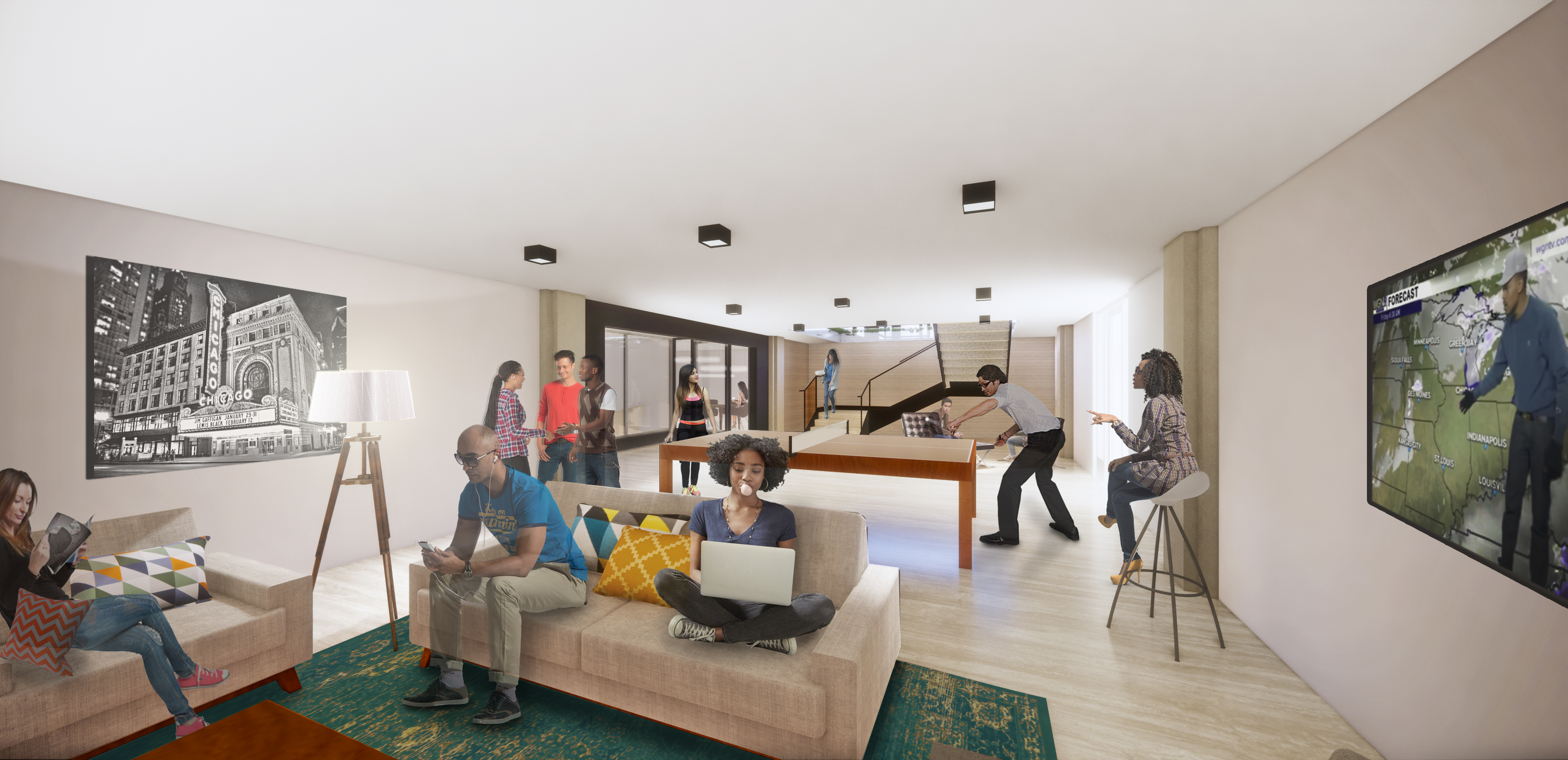Mies-Designed Bailey Hall to Receive Overhaul by Dirk Denison Architects
The Bailey Hall residential building at Illinois Institute of Technology, designed by legendary architect Ludwig Mies van der Rohe, will undergo a major renovation, Illinois Tech announced in June. Dirk Denison Architects, a Chicago-based firm headed by College of Architecture professor and alumnus Dirk Denison (ARCH ’83), is leading the design.
Slated for completion by the fall 2020 semester, Bailey Hall will receive a holistic update to its mechanical, structural, and interior elements. Once completed, it will house up to 330 first- and second-year students, necessitating a substantial reconfiguration from the original apartment-style setup. Still, from the outside, the building will look just as Mies intended when he completed it in 1955.
“My approach to the design is to maintain the legacy of the building’s presence on campus,” says Denison. “If you did a double take, the building would look the same in the future as it has in the past. And that’s done in very simple ways, like being respectful of the expressed structure.”
From the inside, however, Bailey Hall will appear considerably different than it once did. When it was built in the years following World War II, Bailey Hall was intended to accommodate an influx of staff, faculty, and students with families, rather than younger, individual students with different lifestyles.

“This is our challenge and opportunity with the space: How do you take a plan that was originally about separation and privacy and make it fluid and communal,” says Denison.
Denison and his team’s approach is to configure the residential floors in a “pod-style” configuration, with student rooms pinwheeling around central study and social lounge areas. The firm also sought to alleviate one of the least desirable aspects of dorm-living—a lack of natural light—by opening up the corridors and shared spaces to the light and views of the outdoors on all four sides of the building.
Further improving the student experience is a complete overhaul of the building’s energy and mechanical system. Denison touts the addition of a mechanically assisted cooling system that constantly replenishes fresh air in the building. Changes also were made to reduce Bailey Hall’s energy consumption, including high-performance window and frame insulation, as well as an exhaust heat exchanger that saves heat from outgoing air and transferring it to incoming air, reducing the energy expended to maintain a consistent indoor temperature.
Once completed, the new-and-improved Bailey Hall will offer incoming students the unique opportunity to experience life in a Miesian high-rise and a greater connection to the campus’ architectural legacy. Denison says that sensation is most palpable at the building’s ground floor, which retains Mies’ iconic recessed glass lobby.

“The recessed, transparent glass entry is visually welcoming, and sheltering, as you move out of the weather and into the building, and the dynamic of people coming and going makes visible the vitality of the residence,” says Denison. “Unlike some entries where there’s a solid door where you are going to wonder what’s behind, our doors and walls are what we refer to as dematerialization, connecting indoors and out. This is one of the great contributions of Modernism, and one Mies wholly embraced.”
Cognizant of the weight of the renovation, Denison revels in the rare opportunity to work on a Mies-designed building, but also has high hopes for the precedent that the project might set for the rehab of previously overlooked post-war buildings.
“As post-war buildings age in the U.S., the preservation and reuse of modern buildings has become a pressing topic in architecture and urban planning,” he says. “We want to be a demonstration of best practices and best allocation of resources and environmental considerations, and demonstrate how you can continue to use these buildings rather than just tear them down.”